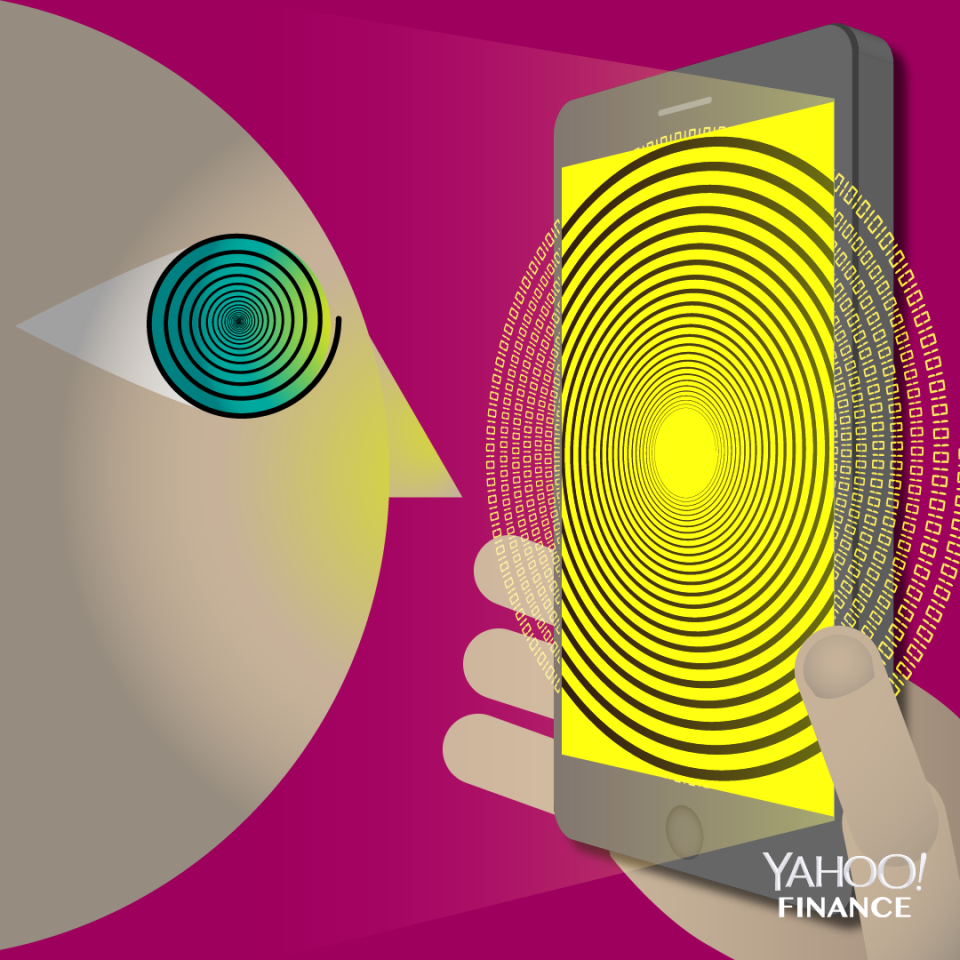‘Tech addiction’ solutions are a billion-dollar market opportunity

Stroll into a restaurant, ride the elevator, or visit the mall, and you’ll notice people just can’t stop checking their phones. For some, it’s a pesky habit, but for others, it’s a thirst that’s hard to quench — arguably an addiction.
“Tech addiction,” as it’s called, is on the rise, experts warn, and it’s no coincidence that as smartphones and services like Facebook (FB), Instagram and Snapchat (SNAP) have become more capable, that people’s behaviors have changed, too. They enable on-demand access to friends, family, colleagues, companies, brands, retailers, cat videos, and more, condensed into a device that fits in the palm of one’s hand — and almost never leaves your side. But while smartphones and other internet-connected devices have the ability to increase people’s productivity, they can also negatively impact the psyche and alter the way we behave and think.
Analysts like Doug Clinton, managing director at Loup Ventures, argue there’s a billion-dollar market opportunity for services that manage people’s unhealthy relationship with tech.
“This opportunity is still just emerging,” says Clinton, who contends that technology doesn’t create new problems but instead, amplifies the problems already present in the human psyche. “I think over the next several years, we’ll see companies come up with products and services we never thought possible.”
A real problem
“Tech addiction” isn’t officially recognized by the latest Diagnostic and Statistical Manual, or DSM-V, but there’s a growing chorus of experts who argue the problem is real.
Teens, in particular, are being severely affected by tech — and not for the better. They’re socializing and dating less, preferring to spend more of their time snapping selfies and sending emoji from the isolation of their homes rather than mingling with their peers in the real world. Meanwhile, studies have linked long-term use of Facebook with depression and chronic loneliness among some types of people.
Even having our phones closeby can be associated with an inability to focus. In April 2017, researchers at the University of Chicago published a report that found that of the 800 people they studied, those who performed best on a series of tests left their phones in another room. People who had their smartphones within eyesight or in their pockets performed significantly worse.
“We think we are actually more productive today because of this technology, that we’re more able to multitask because of this technology,” explains Brian Solis, a principal analyst at the San Francisco-based Altimeter Group. “But what you’re actually doing is rewiring for superficial thinking. You’re literally rewiring your brain.”
Market opportunities
But just because you’ve been “rewired” to think a certain way doesn’t mean the situation is irreversible, argues Solis, who is writing a book about society’s increasingly complicated relationship with tech, due out sometime next year.
Google (GOOG, GOOGL) and Apple (AAPL) introduced analytical tools in their mobile operating systems earlier this year that help users be more conscientious of how much time they’re spending on their devices using different apps.
“I think it’s going to be hard for these big tech companies to have any meaningful impact on the problem,” explains Clinton. “They are incentivized by their [user engagement or earnings] results for their shareholders or for their employees that work on this or that product.”
Already, there are a crop of services and devices from third parties trying to make “digital wellbeing” a priority. Meditation app Calm, which is valued at a reported $250 million, works with your existing devices and encourages people to take a few minutes out of each day to punch out of their daily grind to mentally refocus, Calm’s founder and CEO Michael Acton Smith told Yahoo Finance in a conversation last year. Calm and its competitor Headspace claim tens of millions of users and are free upfront, but charge fees for additional content like meditation and sleep classes or relaxing music.
A four-year-old Brooklyn-based startup, headed by former Google designers Kaiwei Tang and Joe Hollier, went even further with a credit card-size phone that takes minimalism to an extreme. Their Light Phone, which pairs up with your current smartphone, stores just 9 numbers with no texting, apps or music features to speak of, the underlying concept being that users can leave their attention-sucking smartphones at home, take the Light Phone out for some calls, and focus on being “in the moment.”
Tang and Hollier have sold 15,000 Light Phone devices to date and plan on releasing a new version, the Light Phone II, in April 2019.
“We originally created an object, a solution to encourage people to take a break,” Tang tells Yahoo Finance. “We’re not saying the smartphone is bad. We’re saying we have different shoes and clothes for every occasion. Why do I need to have this mini-computer with me 24/7? Why do I have to see all these pop-up notifications of enticement from messages and apps?”
One idea Clinton suggests that any startup has yet to act on: an app that sends users frequent alerts to get back to work or put the phone down if they’ve been using it for 10 minutes or more. There could be some financial incentive, with users escrowing money toward buying something they want if they hit their productivity and work goals.
“Someone who doesn’t have that incentive to keep you connected is the only one who can solve that problem,” contends Clinton, who adds that developers may not be able to match the sheer addictive nature of a booming product like Instagram. “But we should be able to get close.”
That’s probably all developers seeking the next big money-making app or service want to hear.
—
JP Mangalindan is the Chief Tech Correspondent for Yahoo Finance covering the intersection of tech and business. Email story tips and musings to [email protected]. Follow him on Twitter or Facebook.
More from JP:
